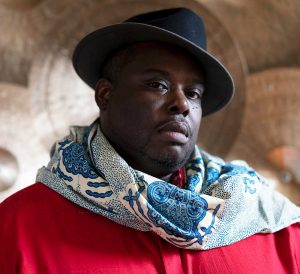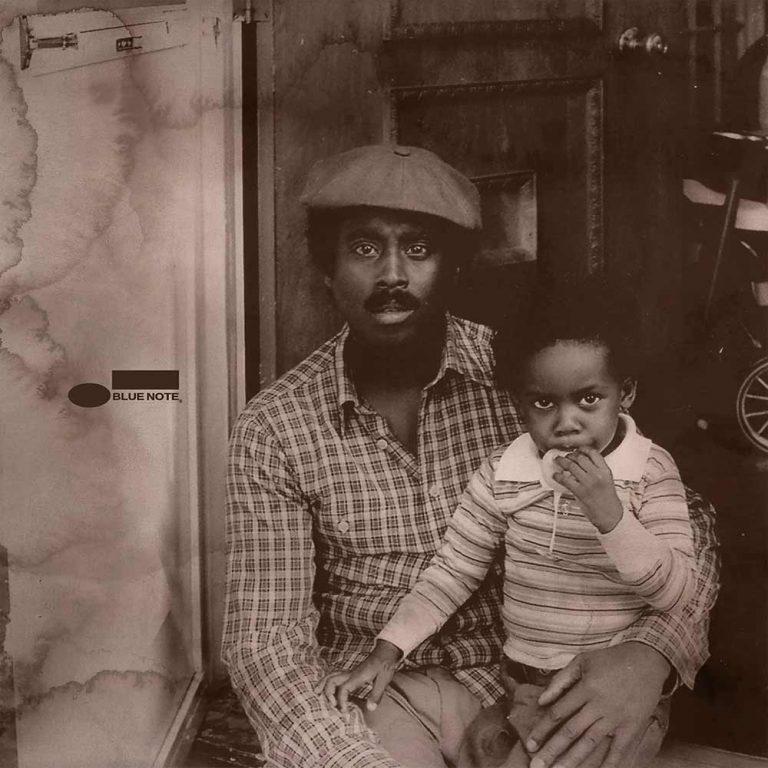Johnathan Blake is a fine example of how years of hard work, perseverance and dedication to one’s craft can finally begin to bear fruit. A first-call sideman for the likes of Kenny Barron, Tom Harrell and the late Dr. Lonnie Smith, Blake is finally garnering recognition as a leader in his own right.
He has released several albums with his own groups since 2014. However, seven years later, much like the pandemic, a seismic shift occurred when the jazz drummer signed with Blue Note in 2021.
“It was actually very organic and was probably one of the easiest partnerships,” says Blake. “Don [Was} and I first met through Dr. Lonnie Smith, when [he] re-signed with Blue Note for his final three records. I had been in Doc’s trio and his larger ensemble for some years. When he signed back for the first record – I think it’s called ‘Evolution’ – Don, who was President of Blue Note, was at the session and we just struck up a friendship. We really had similar interests and similar tastes in music, so it was a beautiful partnership. So even from early on, he always was like, ‘Man, if you have anything that you that you feel strongly about please, by all means send it.’”

A few years would pass and while working on several recordings for the Giant Step Arts label – founded by the celebrated jazz photographer Jimmy Katz – including a live album at a classical recital hall that, he says, didn’t come out the way he knew the band could play. When Blake had his first week at The Village Vanguard as leader, he did a second take with his group Pentad and finally, it felt right. He rushed into the studio immediately following his Vanguard engagement and recorded it. After a few of his band members listened to it, they urged Blake to take Was up on his proposal and send him the recording.
“I let Don listen to the record, and he flipped out. He loved it. He was just like, ‘I played it for everybody in the office and everybody loves it. We want to put it out!’ It was really that simple.” That was “Homeward Bound”, which the title track was dedicated to Ana Grace Márquez-Greene, daughter of Blake’s friend and collaborator, saxophonist Jimmy Greene. Ana Grace, then six years old, was among the 19 children who were shot and killed at Sandy Hook Elementary School. While Blake pays homage, he also notes that “Homeward Bound (For Ana Grace)” is also a celebration of her life.
“It’s harder to try to find those positive things within a pandemic, so I tried to look at the positive. In the middle of a pandemic, I got signed to a major label and got the support that I really needed. For me, there’s so much to be thankful for and to celebrate. Knowing who she was, knowing her parents and her brother, with ‘Homeward Bound,’ this is a celebration of the person [Ana] was and the light that she brought to everybody.”
With his latest effort “Passage”, Blake retains the spirit of his first Blue Note release, however, this time, focused on his father, the late violinist John Blake, Jr. Also a leader in his own right, Blake was also a prominent sideman for McCoy Tyner, Grover Washington, Jr., and a member of Quartette Indigo, led by renowned cellist Akua Dixon.
Unlike the intricate design used as the cover art for “Homeward Bound”, with “Passage”, he instead opted for a sepia snapshot of young Blake sitting on his father’s lap. “The one that’s used on the cover is taken right in front of my parents home, where actually my mother still lives – the front looks a lot different now. It was taken by my dad’s childhood friend – my godfather, Eugene Wood. I didn’t want to put the photo on the cover without acknowledging who the photo was [taken] by; it took us a minute to figure out who it was. On the original photo, there’s just initials on it: EOW. And finally, my mom figured it out: ‘I think I think that was Eugene [who] took that.’”
Blake immediately contacted his godbrother to confirm that his father did indeed take the photograph. Now much older, Mr. Wood’s eyesight isn’t what it used to be, but his memory of capturing that father and son moment is vivid and unsullied. “My godbrother just told him about this photo he took and sure enough, he remembered every single detail about the photo. If you look at the cover, I have like a little donut or something, holding it, and he remembered that. He remembered everything.”
With “Passage”, Blake wants to honor the spirit of that photograph showing not just a young Blake with his chief mentor, but at the core, it captures a poignant look at the relationship between a boy and his father.
“For a very long time, I always wanted to do a record featuring him and some of his compositions, but due to his untimely death, I figured the only way to really keep his life and legacy going is to record music of his. The title track “Passage” is a piece of his that unfortunately he’d never got around to record. When I brought it into the group, it kind of manifested itself into something much larger than us. I really love what these artists brought to it. Some of them [had] known my dad, like Dezron [Douglas] and David [Virelles] around, even Immanuel [Wilkins] knew my dad as a very young boy. I think that connection, they caught the vibe right away. I think [with] that piece in particular, you really hear my father’s personality. He was such a positive person, very high on life, always in a good mood. That piece is a great representation of who he was.”
Shannon J. Effinger (Shannon Ali) has been a freelance arts journalist for over a decade. Her writing on all things music regularly appears in The New York Times, Washington Post, Pitchfork, Downbeat, and NPR Music. Shannon lives and works in New York City.
Header image: Johnathan Blake. Photo: David Ellis/Blue Note Records.



